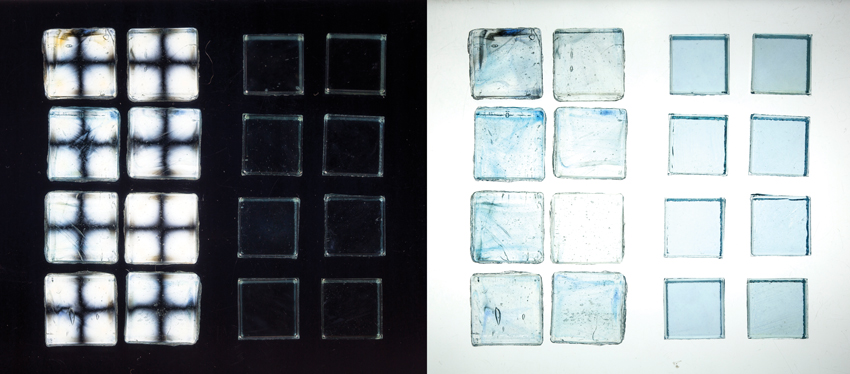Artisanry, Architecture, and North American Glass Tile
Annealing Makes Tile Appealing
One rule of glass tile production: don’t rush. “The longer the process takes to cool the glass, the stronger it is,” says Jeff Nibler, an executive with the manufacturer Oceanside Glasstile. This slow cooling process, annealing, which takes place in an oven or specialized kiln known as a lehr, relieves internal stresses caused by manufacturing. Air-cooled or non-annealed tile, on the other hand, is more prone to poor quality and cracking, he adds. Annealed glass tile is suitable for many types of applications; non-annealed products are more susceptible to environmental conditions that lead to fracturing from stresses inside the glass. Examples include susceptibility to thermal shock in outdoor applications, such as in a swimming pool or fountain.
“It is impossible to tell the difference between an annealed product and a non-annealed product with the naked eye,” adds Nibler. “The only way to visibly see this is through a polariscope.” This device employs two polarized lenses and a light source placed behind the subject glass to determine its optic character. For translucent products, the observer can see evidence of stresses, if any exist, which appear as a rainbow of colors caused by light refracting off the stress conditions. Why worry about the stresses in glass tile? These could be released in any number of ways during the life of an installation, generally through breakage under pressure or thermal differential. That’s why annealed products are specified for a range of applications whereas non-annealed products should be limited to interior walls with low-impact uses and occupancies.

Photos courtesy of Oceanside Glasstile/Chipper Hatter
To distinguish between an annealed product and a non-annealed glass tile requires a trained expert using a polariscope to evaluate the tile’s optic character. Defects, such as stresses, appear as a rainbow of refracted color.
A Hand in the Tile Process
Walking into a tile manufacturing facility illuminates some of the time-honored techniques for making high-quality colored glass pieces. At the same time, one also sees how handcrafted processes and carefully guarded formulations work side by side with modern automation and controls technologies.

Photo courtesy of Oceanside Glasstile/Katarina Shahpazova
The slow cooling process, annealing with a specialized kiln or lehr, relieves internal stresses caused by manufacturing, improves quality, and reduces cracking due to thermal stresses and underwater applications.
For cast glass tile, in the long-established, leading shops in the North America, Europe, and elsewhere, the process involves molten glass that is hand cast at about 1,600 degrees Fahrenheit and hand-sheeted and hand-cut. The producers build on extensive training and knowledge to undertake these handmade methods with reasonable precision and control. Unseen chemical reactions produce a wide array of colors and effects, which can be rigorously monitored for uniformity. Automated rolling and bending machinery may be used. Hand casting is important to many architects and artists. These methods help keep tile shapes and colors uniform, while also allowing for better aesthetics and matching. Manufacturers note that cast glass is generally harder to produce than any other types of glass tile. Consistency and vibrancy of the through-body coloring demands accurate formulation controls, and the heating and cooling during all processes must be continuously monitored. Yet, when made properly, these glass tiles are among the most resilient.

Photo by Nick Nacca, courtesy of Oceanside Glasstile
Hand-casting approaches are widely appreciated by artists and architects alike, as they allow consistent tile shaping, high aesthetic quality, as well as the creation of matching trim pieces. Hand-cast tile, marked by pure colors and a silky/consistent finish and thickness, tends to be durable and ideal for high-impact uses, such as light commercial flooring, and specialty environments, such as swimming pools.









